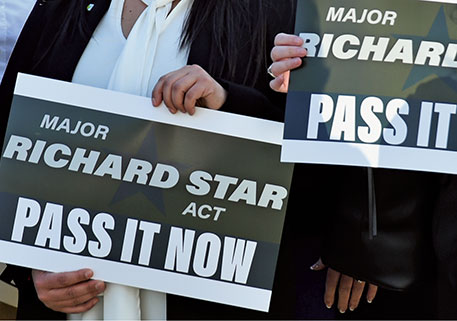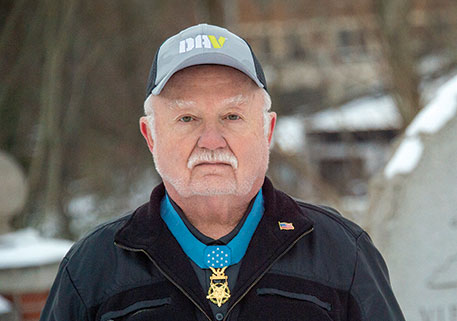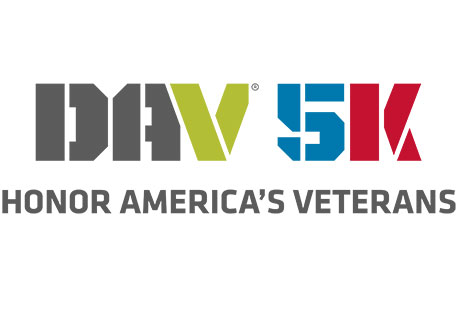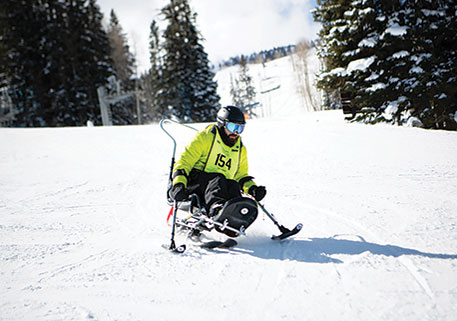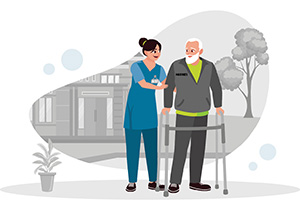 At age 74 and following several strokes, DAV member and retired benefits advocate John Parker was fighting to live life on his own terms. But after losing part of his peripheral vision and trying to manage the difficulties associated with diabetes, the Marine veteran found that goal difficult to achieve.
At age 74 and following several strokes, DAV member and retired benefits advocate John Parker was fighting to live life on his own terms. But after losing part of his peripheral vision and trying to manage the difficulties associated with diabetes, the Marine veteran found that goal difficult to achieve.
That’s where his sister, Carol Sue Parker-Park, came into the picture.
“He just got out of the hospital again recently,” Parker-Park said. “So I’m a caregiver now.”
She said she explored all avenues of available in-home assistance in Barberton, Ohio. In addition to helping her brother travel to Department of Veterans Affairs outpatient clinics and medical center appointments, one path was setting up VA home health care visits to assist him in his quest for independence.
“He’s stubborn … but John doesn’t get out and about much,” said Parker-Park, who is the commander of Auxiliary Unit 35 in Akron, Ohio.
The home health care visits are part of Home-Based Primary Care, one of three programs the VA has expanded in its Office of Geriatrics and Extended Care. These programs seek to help veterans grow older at home rather than being in institutional care.
Parker said a weekly VA nursing visit and two weekly in-home physical therapy sessions contribute to him remaining independent as long as he can.
In October and November 2023, he ended up in the hospital and then a rehabilitation facility because of an infection.
In 1973, Parker had his knee meniscus surgically removed due to an injury that happened at former Marine Corps Air Station El Toro in California. He said he’s had increasing difficulties with walking as he’s aged. In recent years, Parker has continued to help other veterans file their claims as a service officer at Chapter 35 in Akron, Ohio.
He said his sister’s and brother-in-law’s caregiving support at home, and the VA medical visits, allow him to live life on his terms at home most of the time. His family helps him get dressed and makes him meals, but Parker said he can care for many of his own needs.
“It’s better,” he said. “You can be with family instead of a hospital setting.”
Over the next two decades, the number of aging veterans eligible for long-term care is expected to double from 2 million to 4 million.
In January 2022, a five-year expansion of the VA’s Home-Based Primary Care, Medical Foster Home and Veteran-Directed Care programs began.
Additionally, the government continues to speed up the pace for expanded services aimed at providing in-home care. An April 2023 government mandate tasked the VA to consider expanding the Veteran-Directed Care program to all 171 VA medical centers by the end of 2024 instead of the original goal of increasing the program to 70 medical centers over five years.
The other two expansion goals are:
- Adding 75 Home-Based Primary Care teams to areas with the highest unmet need for the program that provides primary care for veterans in their homes when they have complex health care needs for ongoing diseases and illnesses that affect their daily activity; and
- Expanding Medical Foster Homes to 58 more medical centers.
“For years, DAV has urged Congress to address the growing need for alternative options to institutional nursing care—and will continue to do so,” said DAV National Legislative Director Joy Ilem. “The expansion already underway at the VA is a necessary step to ensure service-disabled veterans will have the option of care that more closely aligns with their independence, protects their dignity and helps maintain their quality of life.”
A 2020 Government Accountability Office report projects that VA spending on long-term care for veterans will double from $6.9 billion to $14.3 billion by 2037.
The expansion of the availability of long-term care options is a good move, said Scott Hartronft, executive director of the VA Office of Geriatrics and Extended Care.
“Aging in place is something that we’re really wanting to focus on, and allow veterans to age in place as long as it is safe to do so,” Hartronft said.
In June 2023, Hartronft testified that the VA is on pace to meet the veteran-directed care expansion guideline to all 171 medical centers. The original pace for the expansion was scheduled to take five years through 2026.
Seeing the need, DAV Caregivers Support was developed last year to provide an alternative to keep veterans in their homes longer. Using a digital platform that includes one-on-one concierge services, the no-cost program provides relief, resources and planning to hidden heroes.
Veterans like Parker understand the value caregivers bring. Having his sister at home to help him get up and down while using a walker is necessary—and comforting.
“What makes home a better place are the people who are there for you,” he said. “I have my family, and DAV is my family.”


